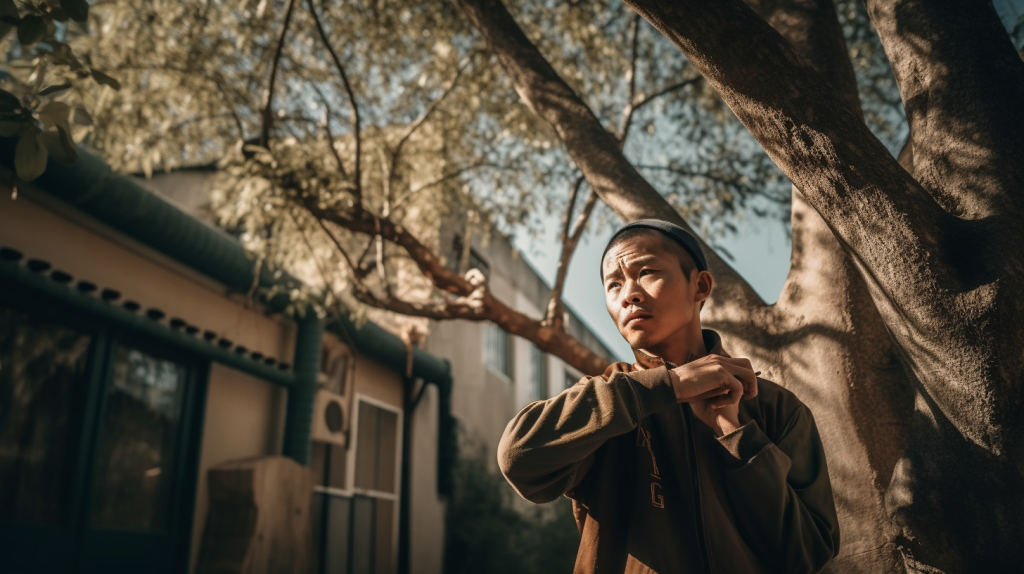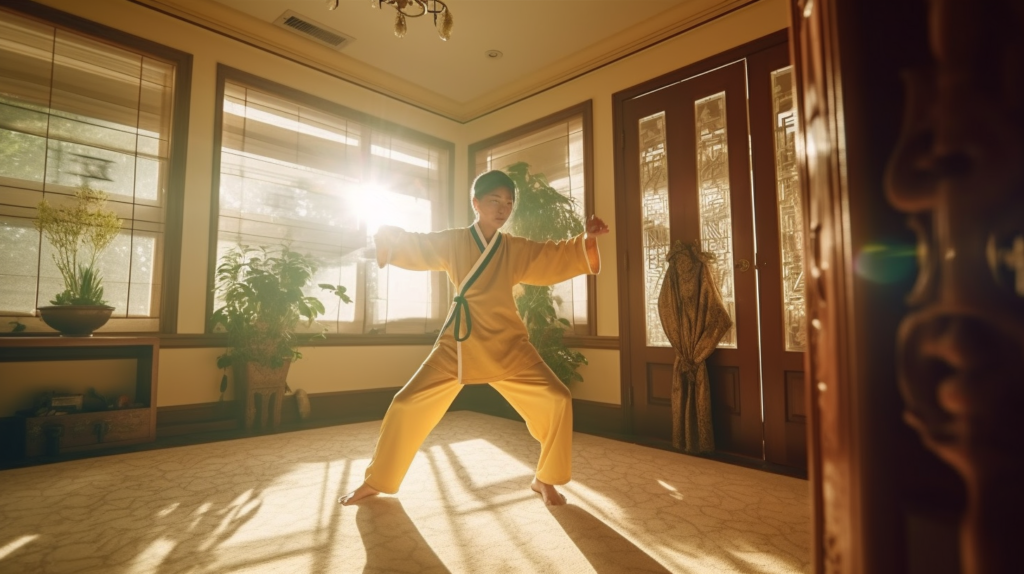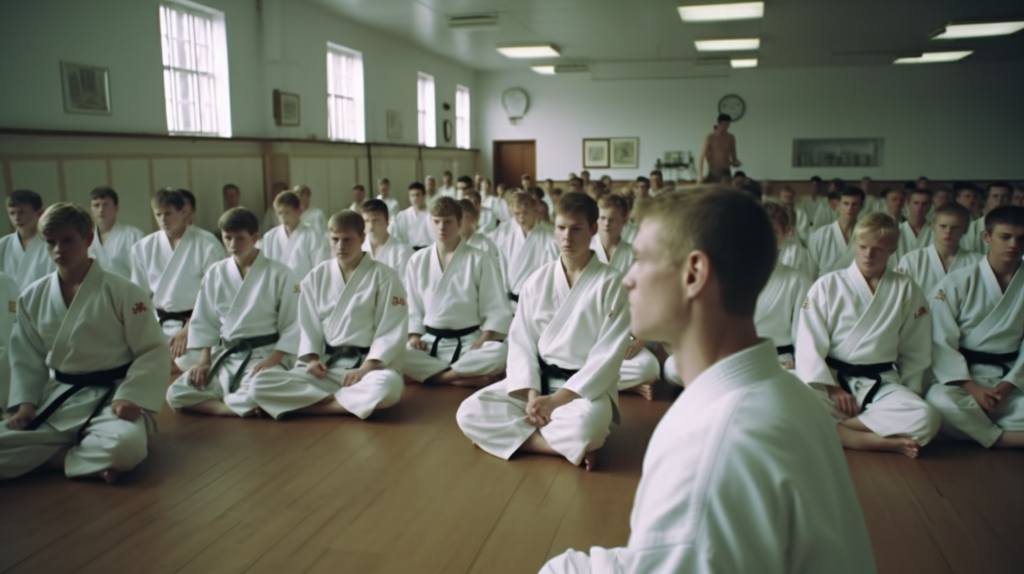The Allure of Wushu (and Why You’re Considering It)
Picture this: you’re watching a martial arts movie, and the actors are executing breathtakingly fluid and powerful moves that leave you in awe. Your inner warrior perks up, and you think, “Wow, I want to learn how to do that!” But then doubt creeps in as you wonder, “Is it hard to learn wushu?”
Well, fear not! We’ve put together this comprehensive guide to help answer your burning question and provide you with all the information you need to determine if wushu is the right martial art for you.
What is Wushu? – A Quick Overview for Those Still Unsure
Before we delve into whether or not it’s difficult to learn wushu (also known as kung fu), let’s first provide some context for those who may be unfamiliar with this ancient Chinese martial art.
Wushu is an umbrella term that encompasses a wide range of traditional Chinese martial arts styles. Originating over 4,000 years ago, wushu was initially developed for military purposes but has since evolved into a sport, form of self-defense, and cultural practice that embodies physical fitness, discipline, and artistic expression.
There are two main categories within wushu:
Taolu (forms)
Choreographed routines consisting of stances, kicks, punches, balances, jumps, sweeps, and throws. These forms can be practiced individually or in groups and often include weapons such as swords, staffs, and spears.
Sanda (sparring)
A modern combat sport that combines elements of traditional wushu techniques with boxing, wrestling, and kickboxing. Sanda is often used for self-defense and competitive purposes.
Factors That Can Influence the Difficulty of Learning Wushu

Now that we’ve provided some background on what wushu is let’s explore the factors that can influence how hard it might be for you to learn this martial art:
Age
While it’s never too late to start learning wushu, it’s generally easier for younger individuals to pick up new physical skills due to their natural flexibility and adaptability. However, if you’re an adult with determination and patience, age should not discourage you from pursuing your wushu dreams.
Physical Fitness Level
Wushu requires a good deal of strength, flexibility, balance, and endurance. Those who already possess a solid fitness foundation may find it easier to learn the various techniques and forms than those who are just starting on their fitness journey.
Previous Martial Arts Experience
If you have experience in another martial art or movement discipline like gymnastics or dance, you may find it easier to transition into learning wushu due to existing muscle memory and body awareness.
Quality of Instruction
As with any skill or sport, having access to a knowledgeable and experienced instructor can significantly impact how quickly and effectively you learn wushu.
Commitment & Consistency
Like anything worth mastering, learning wushu takes time, dedication, and consistent practice. Your willingness to commit to regular training will play a significant role in the ease (or difficulty) of your journey.
The Learning Curve – What You Can Expect When Starting Wushu

Embarking on your wushu journey will undoubtedly involve a learning curve, just as with any new skill or sport. Here’s an idea of what you might expect when starting wushu training:
Basic Stances & Footwork
Begin by building a solid martial arts foundation through learning basic stances such as the horse stance, bow stance, and cat stance. These stances form the basis for more advanced techniques and forms.
Kicks & Punches
Once comfortable with basic stances, you’ll progress to learning kicks (e.g., front kick, side kick, roundhouse kick) and punches (e.g., straight punch, hook punch, uppercut). These techniques will be incorporated into forms and routines.
Forms (Taolu)
As your skills develop, you’ll start learning various forms – the choreographed sequences of movements that showcase the beauty and power of wushu. The complexity of these forms can range from beginner to advanced.
Weapons Training
Many wushu styles incorporate weapons such as swords, staffs, spears, and whips. Weapon training typically begins once students have demonstrated proficiency in empty-handed forms.
Sparring (Sanda)
For those interested in self-defense or competition aspects of wushu, sparring practice allows you to apply your techniques against resisting opponents in a controlled environment.
Tips for Making Wushu Training Easier – Work Smarter, Not Harder
While learning wushu may present challenges to new practitioners, there are ways to make your journey smoother:
Find a Quality Instructor or School
Seek out knowledgeable instructors who promote proper technique, discipline, and safety during classes — this will significantly impact your ability to learn wushu effectively.
Set Realistic Goals
Understand that learning wushu is a gradual process, and it’s essential to set achievable short- and long-term goals for yourself to stay motivated and track your progress.
Practicing Regularly & Consistently
As the saying goes, “practice makes perfect.” Train consistently and focus on incremental improvements in your techniques and forms.
Be Patient & Stay Positive
Learning wushu takes time and patience – don’t be too hard on yourself if you don’t master a technique or form right away. Keep a positive mindset, celebrate small victories, and trust that your hard work will pay off over time.
Cross-Train
Supplement your wushu training with other forms of exercise (e.g., yoga, weightlifting) to improve your overall strength, flexibility, balance, and endurance – all of which will benefit your wushu practice.
The Hardest Parts of Learning Wushu – Embracing the Challenges

While wushu is undeniably a beautiful and captivating martial art, there’s no denying that certain aspects of learning it can be challenging, even for the most dedicated students. Below are some of the hardest parts of learning wushu and tips on how to overcome these obstacles:
Acquiring Flexibility
Wushu requires a significant degree of flexibility to perform high kicks, deep stances, and intricate forms. For some individuals (particularly adults), achieving this level of flexibility can be an uphill battle.
Tip: Include regular stretching exercises in your daily routine, focusing on major muscle groups like hamstrings, hip flexors, and shoulders. Consider incorporating yoga or Pilates into your training regimen to improve overall flexibility.
Mastering Complex Techniques
Some wushu techniques and forms can be quite complex, requiring precise coordination between your hands, feet, body position, and timing. Nailing these moves can take a considerable amount of time and patience.
Tip: Break down complex techniques into smaller components, focusing on mastering each part individually before putting them together. Practice slowly at first to ensure proper form and gradually increase speed as you become more comfortable with the movements.
Building Strength & Power
Many wushu moves demand explosive strength and power from various muscle groups in order to generate forceful strikes or propel the body into acrobatic leaps and flips.
Tip: Incorporate strength training exercises targeting key muscle groups used in wushu (e.g., leg presses for strong kicks) into your fitness routine. Additionally, practicing plyometric exercises like box jumps or burpees can help develop explosive power necessary for advanced moves.
Maintaining Balance & Body Control
Wushu practitioners must continually maintain balance and body control while swiftly transitioning between stances, kicks, and other techniques.
Tip: Incorporate balance exercises into your training, such as standing on one leg or using a balance board. Additionally, practicing slow, controlled movements can help develop the necessary muscle memory and body awareness for maintaining stability during wushu forms.
Developing Mental Focus & Discipline
The mental aspect of wushu is just as important as the physical component. Students must cultivate a strong sense of focus and discipline to excel in this martial art.
Tip: Engage in regular meditation or mindfulness practices to train your mind to stay focused and calm amidst challenging situations. Also, set realistic goals for your wushu practice and hold yourself accountable to achieve them.
Overcoming Frustration & Plateaus
As with any skill or sport, there will inevitably be moments of frustration or periods where progress seems to have stalled (known as plateaus). These challenges can be especially difficult for wushu students who may feel discouraged by their perceived lack of progress.
Tip: When faced with frustration or a plateau, remind yourself that learning wushu is a journey that takes time and patience. Seek guidance from your instructor and consider attending workshops or seminars to gain new insights and techniques that can help you overcome these obstacles.

So, is it hard to learn wushu? The answer ultimately depends on various factors unique to each individual. However, with dedication, perseverance, proper instruction, and consistent practice (plus a healthy dose of patience), anyone can embark on their journey towards mastering this amazing martial art.
The rewards of learning wushu extend far beyond physical prowess or self-defense skills – you’ll also develop mental clarity, discipline, artistic expression, cultural appreciation, and camaraderie with fellow practitioners. So why not give it a shot? Your inner warrior is waiting!

